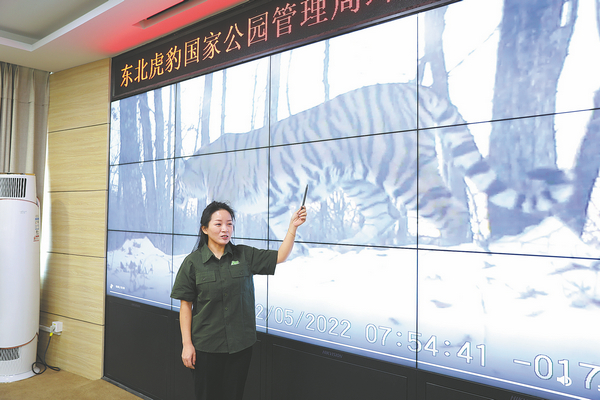Processing patterns
By Liu Mingtai/Zhou Huiying | China Daily | Updated: 2022-12-16 07:38

After graduation in 2008, she found a job as an office clerk at a private company in Shenzhen, Guangdong province. To live with her husband after their marriage in 2013, Duan quit her job in Shenzhen and moved to Hunchun. She became a guide and interpreter at an ecological experience museum of the Hunchun forestry bureau.
"The museum displays knowledge on dozens of wild animals living in the region, including tigers, Amur leopards and some other endangered species," she says. "Growing up in an urban area, I seldom had the chance to get much information about wildlife."
To make her interpretation more professional and vivid, Duan has spent much of her spare time learning about wildlife.
"That was when I got interested in big cats. The study has high scientific research value," she says. "Every year, the bureau holds training courses for us, and we learn a lot from forestry experts."
With the rich experience she has accumulated over the years, she was selected to the position in 2020.
In the same year, a high-tech surveillance system was put into operation in the Northeast China Tiger and Leopard National Park, providing real-time protection of fauna and flora. The system integrates modern communication, artificial intelligence and cloud computing, helping capture images of Siberian tigers and Amur leopards, according to the park.
























